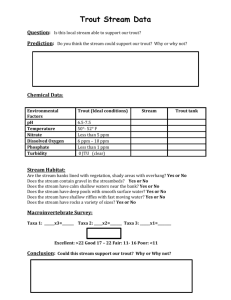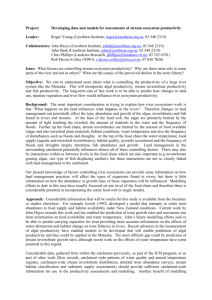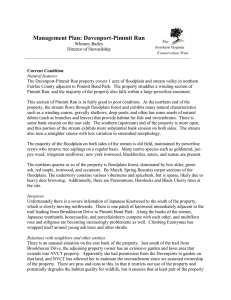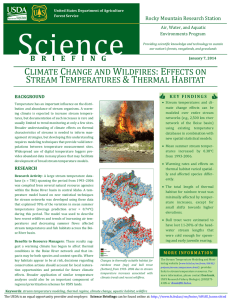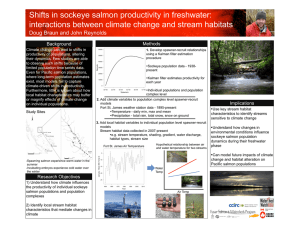Reporting Our Progress in Caring for the Land and Serving People
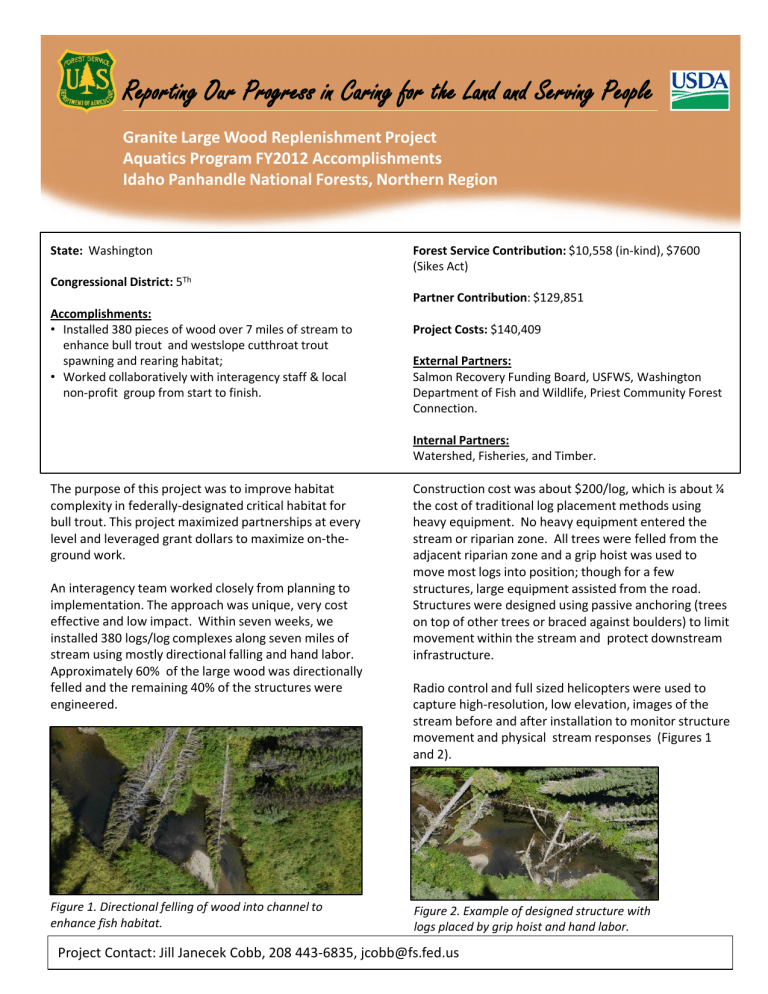
Reporting Our Progress in Caring for the Land and Serving People
Granite Large Wood Replenishment Project
Aquatics Program FY2012 Accomplishments
Idaho Panhandle National Forests, Northern Region
State: Washington
Congressional District: 5 Th
Accomplishments:
•
Installed 380 pieces of wood over 7 miles of stream to enhance bull trout and westslope cutthroat trout spawning and rearing habitat;
• Worked collaboratively with interagency staff & local non-profit group from start to finish.
The purpose of this project was to improve habitat complexity in federally-designated critical habitat for bull trout. This project maximized partnerships at every level and leveraged grant dollars to maximize on-theground work.
An interagency team worked closely from planning to implementation. The approach was unique, very cost effective and low impact. Within seven weeks, we installed 380 logs/log complexes along seven miles of stream using mostly directional falling and hand labor.
Approximately 60% of the large wood was directionally felled and the remaining 40% of the structures were engineered.
Forest Service Contribution: $10,558 (in-kind), $7600
(Sikes Act)
Partner Contribution : $129,851
Project Costs: $140,409
External Partners:
Salmon Recovery Funding Board, USFWS, Washington
Department of Fish and Wildlife, Priest Community Forest
Connection.
Internal Partners:
Watershed, Fisheries, and Timber.
Construction cost was about $200/log, which is about ¼ the cost of traditional log placement methods using heavy equipment. No heavy equipment entered the stream or riparian zone. All trees were felled from the adjacent riparian zone and a grip hoist was used to move most logs into position; though for a few structures, large equipment assisted from the road.
Structures were designed using passive anchoring (trees on top of other trees or braced against boulders) to limit movement within the stream and protect downstream infrastructure.
Radio control and full sized helicopters were used to capture high-resolution, low elevation, images of the stream before and after installation to monitor structure movement and physical stream responses (Figures 1 and 2).
Figure 1. Directional felling of wood into channel to enhance fish habitat.
Figure 2. Example of designed structure with logs placed by grip hoist and hand labor.
Project Contact: Jill Janecek Cobb, 208 443-6835, jcobb@fs.fed.us





